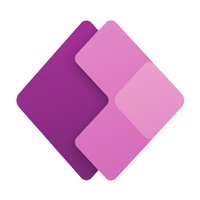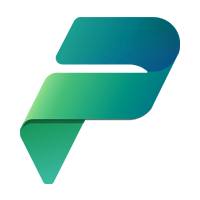What’s Included?
Prerequisites
- Hands-on experience with Power Platform components (Apps, Flows, Dataverse) (required)
- Proficiency in coding with JavaScript, TypeScript, C#, HTML, .NET (required)
- Familiarity with RESTful Web Services, Microsoft Azure, Microsoft 365 (required)
- Completion of PL-900T00: Microsoft Power Platform Fundamentals
Skills You’ll Gain
- App Building
- Data Structuring
- Workflow Automation
- Logic Implementation
- Component Extension
- System Integration
- Lifecycle Management
Self Study Materials Included
Videos
Engaging visual content to enhance understanding and learning experience.
Podcasts
Insightful audio sessions featuring expert discussions and real-world cases.
Audiobooks
Listen and learn anytime with convenient audio-based knowledge sharing.
E-Books
Comprehensive digital guides offering in-depth knowledge and learning support.
Module Wise Quizzes
Interactive assessments to reinforce learning and test conceptual clarity.
Additional Resources
Supplementary references and list of tools to deepen knowledge and practical application.
Tools You’ll Master

Dataverse

Power Apps

Power Platform

Visual Studio Code
What You’ll Learn
Build Canvas and Model-Driven Power Apps
Create custom apps using Power Apps design tools.
Work with Dataverse Tables and Business Rules
Structure data with relationships, columns, and rules.
Automate Processes Using Power Automate Connectors
Streamline workflows with built-in and custom connectors.
Implement Advanced Logic Using JavaScript and C#
Add complex functionality with scripting and coding.
Course Modules
Lesson 1: Use Advanced Techniques in Canvas Apps to Perform Custom Updates and Optimization
Module 1.1: Use imperative development techniques for canvas apps in Power Apps
Module 1.2: Perform custom updates in a Power Apps canvas app
Module 1.3: Use Dataverse choice columns with formulas
Module 1.4: Reduce complexity in your data model with Dataverse table relationships
Module 1.5: Work with relational data in a Power Apps canvas app
Module 1.6: Work with data source limits (delegation limits) in a Power Apps canvas app
Module 1.7: Complete testing and performance checks in a Power Apps canvas app
Module 1.8: Optimize app load time
Module 1.9: Use Monitor to troubleshoot Power Apps
Module 1.10: Use Power Apps Instrumentation with Application Insights
Lesson 2: Automate a Business Process with Expressions and Dataverse Actions Using Power Automate
Module 2.1: Get started with Power Automate
Module 2.2: Introduction to expressions in Power Automate
Module 2.3: Use Dataverse triggers and actions in Power Automate
Lesson 3: Introduction to Developing with Microsoft Power Platform
Module 3.1: Introduction to Microsoft Power Platform developer resources
Module 3.2: Use developer tools to extend Power Platform
Module 3.3: Introduction to extending Power Platform
Lesson 4: Extend the User Experience with Client Scripting and Command Bar Customization
Module 4.1: Perform common actions with client script in Power Platform
Module 4.2: Automate business process flows with client script
Module 4.3: Customize the command bar
Lesson 5: Build Basic Code Components with the Power Apps Component Framework
Module 5.1: Get started with Power Apps component framework
Module 5.2: Build a Power Apps component
Lesson 6: Extending Power Platform Dataverse
Module 6.1: Introduction to Dataverse for developers
Module 6.2: Extend plug-ins in Power Platform
Module 6.3: Work with Dataverse Web API
Lesson 7: Integrate with Dataverse and Azure
Module 7.1: Integrate Dataverse with Azure solutions
Module 7.2: Explore Azure Functions
Module 7.3: Develop Azure Functions
Lesson 8: Get Started with Custom Connectors for Microsoft Power Platform
Module 8.1: Get started with custom connectors in Microsoft Power Platform
Module 8.2: Discover and use Web APIs with Power Apps
Module 8.3: Configure custom connectors with authenticated APIs in Microsoft Power Platform
Module 8.4: Configure policy templates for custom connectors in Microsoft Power Platform
Module 8.5: Create Microsoft Power Platform OpenAPI custom connectors
Lesson 9: Basic Application Lifecycle Management in Microsoft Power Platform
Module 9.1: Manage solutions in Power Apps and Power Automate
Module 9.2: Introduction to solutions for Microsoft Power Platform
Frequently Asked Questions
This course is designed for developers who want to create and extend Power Platform solutions using traditional code alongside low-code tools.
Yes, development experience in JavaScript, C#, and familiarity with Power Platform fundamentals is required.
This course prepares you for the PL-400: Microsoft Power Platform Developer certification exam.
You will use Power Platform tools, Visual Studio, RESTful APIs, JavaScript, Power BI, and Microsoft Azure services.
Yes, it’s available via Virtual Instructor-Led Training (vILT), in-person, or through private group sessions.
Yes, it replaces the MB-400 course previously offered by Microsoft.
Yes, training providers like NetCom Learning offer flexible and customizable options based on your business needs.